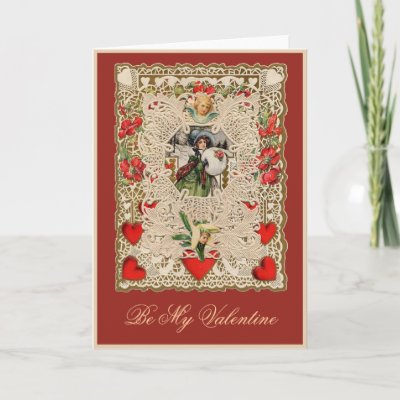Please try not to disturb the currently somewhat sparse camouflage...
The holiday we mark on February 14 as Valentine's Day seems to have a more ambiguous origin than most. Long ago it was a liturgical celebration of a number of early Christian saints named Valentinus, derived from the Latin valens, meaning worthy, strong or powerful. There is much contention about the accuracy of St. Valentine stories, but the primary one reportedly was imprisoned for performing weddings for soldiers who were forbidden to marry. (Because the Roman Emperor Claudius II thought single men made better soldiers than ones with wives and families...) During his imprisonment, Valentine is said to have healed the blind daughter of his jailer Asterius, and legend states that before his execution he wrote "from your Valentine" as a farewell to her, and this expression is still used to this day. Also according to legend, Saint Valentine is said to have given soldiers hearts cut from parchment, to remind them of Christian precepts. Other Valentine's Day symbols that are used today include doves and the figure of the winged Cupid.
Although much disputed, some claim that the early Christian church may have decided to place St. Valentine's feast day in the middle of February in an effort to "Christianize" the pagan celebration of Lupercalia. This was a fertility festival celebrated at the ides of February, or February 15. During the Middle Ages, it was commonly believed in France and England that February 14 was the beginning of birds' mating season, which added to the idea that the middle of February should be a day for romance.
The day was first associated with romantic love in the circle of Geoffrey Chaucer in the High Middle Ages, when the tradition of courtly love flourished. By the 15th century, it had evolved into an occasion in which lovers expressed their love for each other by presenting flowers, offering confectionery, and sending greeting cards (known as "valentines"). The oldest known valentine still in existence today was a poem written in 1415 by Charles, Duke of Orleans, to his wife while he was imprisoned in the Tower of London following his capture at the Battle of Agincourt. This greeting is now part of the manuscript collection of the British Library in London, England.
Originally valentines were hand-written missives, but paper Valentines became so popular in England in the early 19th century that they were assembled in factories. Fancy Valentines were made with real lace and ribbons, with paper lace introduced around 1850. In the United States, the first mass-produced valentines of embossed paper lace were produced and sold shortly after 1847 by Esther Howland (1828–1904) of Worcester, Massachusetts. Her father operated a large book and stationery store, but Howland took her inspiration from an English Valentine she had received from a business associate of her father's.

Intrigued with the idea of making similar Valentines, Howland began her business by importing paper lace and floral decorations from England. Known as the “Mother of the Valentine,” Howland made elaborate creations with real lace, ribbons and colorful pictures known as "scrap." Today, according to the U.S. Greeting Card Association, an estimated 1 billion Valentine’s Day cards are sent each year, making Valentine's Day the second most popular card-sending holiday after Christmas. Since 2001, the Greeting Card Association has been giving an annual "Esther Howland Award for a Greeting Card Visionary."
In 1913, Hallmark Cards produced their first valentine, and commercialization quickly replaced religion and romance as a primary mark of Valentine's Day. The day still has some other connections and connotations, though:
- The Saint Valentine's Day Massacre is the name given to the 1929 murder of seven mob associates, lined up against a garage wall in Chicago, IL and shot by members of Al Capone's gang in a prohibition era conflict.
- V-Day, February 14th, is a global activist movement to end violence against women and girls started in 1998 by author, playwright and activist Eve Ensler. In 2013 it was billed as One Billion Rising, and the occasion was marked by huge gatherings all over the world.
- The Women’s Memorial March is an annual event held on Valentine's Day that originated in Vancouver's Downtown Eastside in 1992 to call attention to missing and murdered women in the community.
What I haven't been able to find out, though, is how/why exchanging valentines became obligatory for children, although apparently teachers receive the most valentines of all!